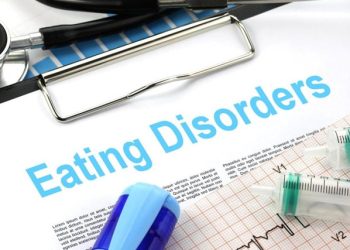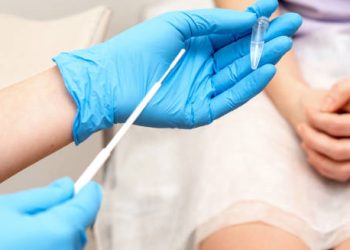Diagnosis of Molluscum Contagiosum
Diagnosis of Molluscum Contagiosum primarily relies on clinical observation and physical examination.
Doctors usually spot this viral skin condition by its distinct look. Most of the time, they do not need lab tests. But in some cases—when the lesions look unusual or when the patient’s immune system is weak—a fuller approach to the Diagnosis of Molluscum Contagiosum becomes necessary to tell it apart from other skin conditions.
Medical History Assessment
The diagnosis begins with a detailed talk about the patient’s medical history. During the consultation, the healthcare provider asks about when symptoms began, how long they have lasted, any skin changes, and if there was contact with infected people. In adults, the doctor also asks about sexual activity. They check for any conditions that weaken immunity (like HIV or use of immune‑suppressing drugs). This information helps guide the rest of the exam.
Clinical Examination
Visual inspection is the main tool for the Diagnosis of Molluscum Contagiosum. The clinician looks closely at the affected areas. They search for classic signs: small, round, dome‑shaped bumps that may appear flesh‑coloured, pink, or white, with a central dimple. These spots usually measure 2–5 mm across, though in immunocompromised patients they can be bigger.
In children, lesions often appear on the trunk, limbs, or face. In sexually active adults, they tend to occur on the lower belly, inner thighs, or genital parts. Some people have only a few bumps; others have clusters covering wide areas.
Dermatoscopy (using a magnifying tool) can help. Under it, Molluscum lesions often show a central pore and white or yellowish amorphous zones, surrounded by fine blood vessels. This supports the clinical diagnosis.
When Further Testing Is Needed
Typical cases don’t need lab work. But if the disease looks unusual or the patient is high‑risk, doctors may order more tests to be safe.
In immunocompromised patients, lesions might be bigger, spread out, or resist usual treatments. In such cases, physicians may perform a skin biopsy. The doctor removes a small sample of skin under local anaesthetic and examines it under a microscope.
Histology often reveals characteristic inclusion bodies (Henderson–Patterson bodies) in skin cells. These intracytoplasmic inclusions are strong indicators of Molluscum contagiosum virus (MCV). Finding them helps confirm the disease and rule out other skin problems like basal cell carcinoma, keratoacanthoma, or fungal infections.
Differential Diagnosis
Diagnosis can be tricky because other conditions mimic Molluscum. Distinguishing them ensures correct treatment. Some lookalikes include:
- Viral warts (HPV)—these often lack central dimples and feel rough
- Chickenpox (varicella)—presents as itchy blisters in different stages and often includes systemic symptoms
- Basal cell carcinoma—especially in adults; more persistent and irregular
- Fungal infections (e.g. cryptococcosis or histoplasmosis)—in immunosuppressed people, these may resemble Molluscum but require antifungal therapy
- Milia—small cysts filled with keratin; they usually lack the central depression seen in Molluscum
In doubtful cases, a biopsy or PCR (polymerase chain reaction) test may be done. PCR can detect viral DNA and confirm MCV presence.
Role of STI Screening in Adults
When Diagnosis of Molluscum Contagiosum involves genital lesions in adults, doctors may suggest screening for other sexually transmitted infections (STIs). These include HIV, syphilis, gonorrhoea, and chlamydia. Co‑infection may change management and highlight public health needs.
Paediatric Considerations
Children rarely require lab testing. The unique look of the lesions often makes diagnosis straightforward. Still, clinicians must watch for signs of superinfection—redness, swelling, or discharge—which may require bacterial cultures or further tests.
If lesions appear in unusual spots (for example, near the eyes), referral to a dermatologist or pediatric infectious disease specialist may be needed to ensure correct diagnosis and care.
Diagnosis in Immunocompromised Patients
In people with weakened immunity, Diagnosis of Molluscum Contagiosum becomes more complex. Spots may be many, larger, or atypical. Visual diagnosis alone may not suffice.
In those cases, doctors often combine clinical observation with histopathological exams, viral tests, or even electron microscopy to distinguish Molluscum from more serious skin diseases or opportunistic infections. Diagnosing the underlying immune weakness is crucial for successful treatment.
Psychological and Social Factors in Diagnosis
Although psychology and social issues don’t affect the clinical diagnosis, they matter. Lesions on visible areas (face, neck, genital parts) may cause embarrassment, anxiety, or social withdrawal—especially in teens and adults. Doctors should be sensitive to these effects during diagnosis and reassure patients about the benign nature of the condition.
Summary
In short, the Diagnosis of Molluscum Contagiosum is mostly clinical. Doctors rely on the lesion’s appearance and patient history. Lab tests are rarely needed. But when lesions are unusual, patient immunity is low, or treatment fails, further workup—like biopsy or PCR—is warranted. Accurate differential diagnosis prevents wrong treatment. In adults with genital lesions, STI screening may be important. A careful diagnosis leads to the right treatment, fewer complications, and less emotional stress.


